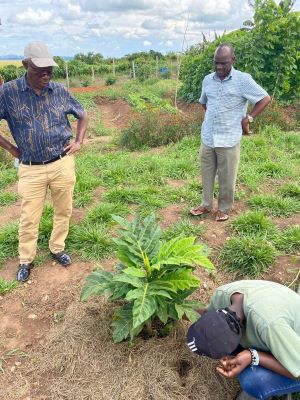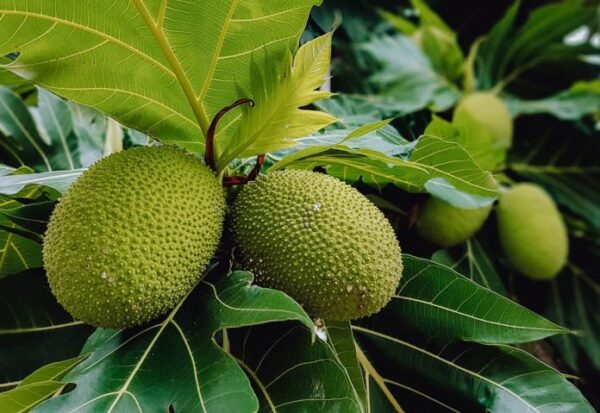In Uganda, breadfruit is gaining popularity due to its many benefits that include its antioxidant capability enabling consumers build resistance against infections and boost the immune system besides being rich in fiber that may help manage diabetes among others.
In fact, research has found that consumption of the fruit which is the only fruit that can replace corn due to its high starch content of about 20% can help in wound healing and management of arthritis, asthma, back pain, ear infections and other conditions.
According to Kamya Musigire who is running commercial tree nursery business in Wakiso and Mukono districts in Uganda, he first interacted with breadfruit in 2016 from his client who had imported some baby plantlets from Jamaica and since then he has been propagating its seedlings for farmers who have developed interest in planting the crop due to its unmatched benefits.
“There are many farmers here who have started harvesting the fruit for household consumption and sale in the local markets,” said Musigire.
Already, he said, there is breadfruit value addition facility built at Jinja in Uganda where farmers have started selling their fruits, creating ready market for the growers. The processing facility makes flour and other products from dried breadfruits.
“I think the best way to hack breadfruit farming anywhere is to start by backyard farms then grow it bit by bit. There are people who will always learn from others,” said Musigire.
Mary McLaughlin, the chairperson of Trees That Feed Foundation (TTFF), a California-based foundation that donates trees and equipment to entrepreneurs and community groups to produce food products locally says that farmers should not be forced to plant the crop but based on its benefits, they should be left to willingly make the decision.
“What we insist on is that breadfruit should be grown in areas with favourable conditions because if this is not properly considered, even the willing growers may not realise the harvest,” she said.

Mukundi urges Kenyan farmers especially from the western region bordering Uganda to consider breadfruit farming because the warm areas around Lake Victoria favour the crop.
“In Kenya, we have many low laying areas where the crop can do well. All the farmers in these places need to know is that seedlings are available, the fruit is easy to grow and maintain especially if it is established and the market is big locally leave alone internationally,” said Mukundi.
Kenyans are currently faced with high cost of maize and wheat flours which are highly consumed locally. However, if early adopters of breadfruit farming in the country could have taken the venture seriously, we could be like Uganda or even better, he added.
Breadfruit economics
Breadfruit is one of the highest-yielding food plants and the only fruit that can provide an alternative to wheat and corn, hence the name ‘breadfruit’.
A single tree can produce 200 or more fruits per season with 2-3 fruiting seasons per year.
A single fruit can produce 1/2 kilo of dried fruit or flour hence individuals and groups can earn money as tree growers, flour processors, bakers, and chefs. They can grow their businesses locally or market their products commercially.
A few of the many existing breadfruit products include chips, pizza crust, and muffin mix.
Kenya’s Jomo Kenyatta University of Agriculture and Technology (JKUAT) has also made breadfruit vodka which the institution researchers say will provide a healthy alternative to the local brew.









